|
'Hydrogen
Mobility: Research and Industry embark on a path of convergence' is the title of
the conference held today in Rome by the CNR (National Research Council), ENEA (Organisation
for New Technologies for Energy and the Environment) and the 'La Sapienza'
University of Rome.
The event is part of 'H2ROMA', a landmark initiative to promote renewable
hydrogen power, and it would therefore not have been complete without the
participation of Fiat Auto.
The Fiat Group has always been at the forefront on this issue, with a commitment
to the environment developed in accordance with two main guidelines:
- improve the eco-compatible
characteristics of conventional engines;
- more research into
alternative traction systems.
The ability to
ensure the mobility of persons and goods while respecting the environment is in
fact a priority for both the public administration, which must consider the
demands of the citizen, and the automotive industry, which must offer new
technologies that improve the relationship between the motor car and the
Environment.
In response to two of the key environmental issues today on a European and
global scale - the reduction of pollutant emissions and the reduction of carbon
dioxide emissions (CO2 is one of the gases considered responsible for the
greenhouse effect) - Fiat Auto has focused its efforts not only on improving
conventional, petrol and diesel powered internal combustion engines, but also on
the research and development of alternative traction systems.
It should not be forgotten that Fiat Auto boasts a commitment dating back many
years to improving Diesel engines. Indeed, Fiat's leading role in this field is
highlighted by the following landmarks: in 1987, Fiat introduced the Croma 1.9
TD i.d., the world's first production diesel engined car with direct fuel
injection; in 1997 Fiat marketed the Alfa 156 JTD, the world's first Diesel
engined car with Common Rail technology; in 2002 Fiat introduced the Multijet
system.
Multijet, second generation 'Common Rail'
The new Multijet system is the product of Fiat's long-standing experience in
engine design and represents a move up to a new level of quality in the
technological evolution of Diesel engines. Multijet uses a sophisticated
electronic fuel injector control system to execute a larger number of injections
for each single engine cycle.
The main injection volume is subdivided into more, smaller injections in
different schedules depending on the engine speed and torque required by the
driver. This reduces noise, consumption and emissions, and yet also offers
better performance.
Fiat's newest diesel engine - the 1.3 Multijet 16v - also belongs to this
family. With its sophisticated engineering, the 1.3 Multijet is perfectly suited
for superminis, and helps achieve even more ambitious goals for the reduction of
CO2 emissions.
Moreover, meticulous structural design, in conjunction with Multijet technology,
not only ensures complete, long term reliability (250,000 Km), but also achieves
extremely high levels of acoustic/ vibration comfort. This is therefore an
inherently clean engine, with low fuel consumption and generous performance,
that is also quiet and comfortable.
Methane: a choice for the environment
Fiat Auto believes that methane power represents the most suitable and most
easily attainable solution today for solving urban pollution problems. This is
because methane has advantages both in terms of the environment and from an
economical point of view.
Fiat initiated research into the use of methane technology in the early
'Nineties, when changes in automotive exhaust emissions legislation posed the
need to develop an innovative, electronically controlled, sequential, phased
multipoint fuel injection system not yet available on the market and
sufficiently sophisticated to comply with further, stricter emissions controls
in view of future Euro 4 limits, planned for 2005.
Since then, technology has made giant leaps forward and, after years of study
and research, an electronic gas injection system has been created. This is
installed in methane-powered Fiats, and has brought methane-powered engines up
to the same levels as today's best electronic injection petrol engines. The
heart of the injection system consists of an electronic control unit, a series
of electro-injectors that meter out the quantity of gas, and a pressure
regulator.
The electronic control unit managing the gas injection process is the most
active, and also the most sophisticated component in the system.
The monitoring procedures used are designed to comply with future EOBD (European
On Board Diagnosis) regulations and automatically remap gas flow and ignition
advance in accordance with the composition of the gas fuelling the engine in
order to maximise the conversion efficiency of the catalytic exhaust.
Unlike petrol, the composition of the gas varies depending on its origin, and
the injection system must therefore be able to detect the particular gas
composition and adapt the fuel flow accordingly to achieve the correct
stoichiometric ratio.
Fiat Auto is the pacemaker in this technology and is the first manufacturer to
include, as part of its 'Natural Power' environmentally oriented range, a wide
array of dual fuel (methane/petrol) bipower vehicles that answer the mobility
needs of a broad spectrum of users, including the professional retail, crafts
and goods transport sectors.
Specifically, the range of models offered today includes: the Punto in both
saloon and van versions, the Multipla, the Ducato in van, combi and panorama
versions, and the DoblÚ, in passenger car and Cargo versions. Fiat Auto is
therefore committed across the board to the technological development and
creation of increasingly eco-compatible vehicles.
Fuel cell vehicles
The use of hydrogen as an energy vector for vehicle propulsion is one of the
most promising prospects for future mobility. In 2001 Fiat Auto, in
collaboration with the Fiat Research Centre and with the support of the Ministry
of the Environment, built a first prototype - the Seicento 'Elettra H2
Fuel Cell'.
The vehicle architecture was based on a propulsion system in which the fuel cell
serves as an auxiliary power source. It is used to keep a pack of lead
batteries, used to power the electric traction motor, fully charged. The car has
a top speed of 100Km/h and a range of 140Km in the urban cycle. In 2003 the
Seicento 'Hydrogen' was presented: this is a second-generation vehicle that
exceeds the performance and space limitations of the previous model.
The main difference lies in the fact that the fuel cell now produces up to 40 kW
of electric power with absolutely no harmful emissions and with an efficiency of
up to 70% in optimal conditions.
In 2003 again, a new project was unveiled that testifies to Fiat Auto's
commitment to alternative traction: the Panda 'Hydrogen'. Here too, the fuel
cell is connected directly to the electric traction motor and provides all the
power needed for moving. The hydrogen fuel for the fuel cell is contained in two
tanks, made from composite material, installed under the car's floorpan.
This means that all the distinguishing characteristics of the Panda's passenger
compartment can be retained. The car can reach a top speed of 130Km/h, has a
range of over 220Km and will be used in a demonstration fleet to assess the
environmental benefits and performance of the vehicle.
Integrated Stop&Start system
The development of hybrid vehicles focuses on architectures in which the
electric motor only performs an auxiliary and supplementary function in relation
to the internal combustion engine, geared to reduce fuel consumption. Today,
'micro-hybrid' systems in which the electric motor is used to perform stop&start
functions for the internal combustion engine, offer the best possible
cost/benefits ratio.
In an initiative to reduce the fuel consumption of A-B category vehicles powered
by conventional petrol or diesel drive trains, Fiat Auto is developing a BAS
based (Belt Alternator-Starter) stop&start system.
This technology, used in conjunction with a semi-automatic transmission (Dualogic),
has proven itself to be particular suitable for urban mobility applications, in
which vehicles frequently come to a stop in city traffic.
The BAS restarts the internal combustion engine quickly and quietly. This means
that whenever there are no traction power demands made on the engine, it can be
turned off, resulting in a reduction in fuel consumption and CO2
emissions of more than 12% over the NEDC type approval cycle.
THE PANDA
HYDROGEN IN DETAIL
 |
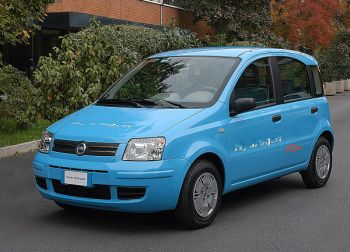 |
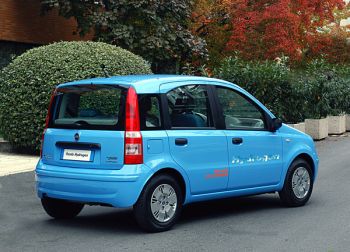 |
|
During 2003 a new Fiat
project was unveiled that testifies to Fiat Auto's commitment to
alternative traction: the Panda 'Hydrogen'. It built on lessons
learned from the Seicento Elettra, with the fuel cell connected
directly to the electric traction motor to provide all the power
needed for moving. |
|
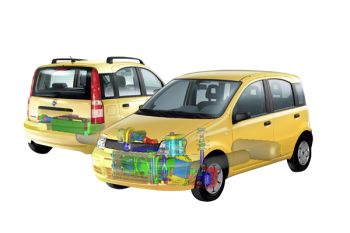 |
|
The hydrogen fuel for
the Panda's fuel cell is contained in two tanks, made from composite
material, installed under the car's floorpan. This means that all
the distinguishing characteristics of the Panda's passenger
compartment can be retained. |
|
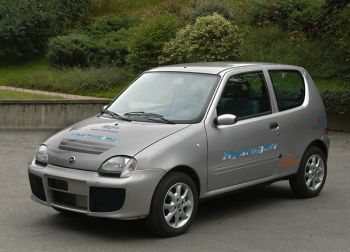 |
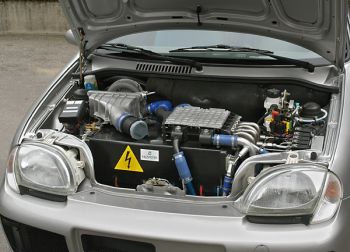 |
|
In 2001 Fiat Auto, in
collaboration with the Fiat Research Centre and with the support of
the Ministry of the Environment, built a first prototype - the
Seicento 'Elettra H2 Fuel Cell'. |
|
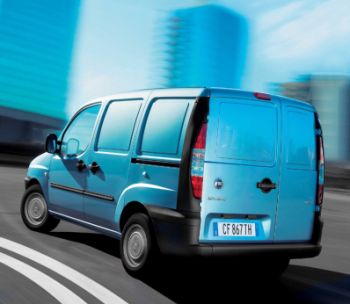 |
|
The range of Fiat
models today that offer 'environmentally friendly' methane power is
rapidly expanding and at present is made up of the Punto, in both
saloon and van format, the Multipla, the Ducato in van, combi &
panorama versions, as well as the DoblÚ, in passenger car & Cargo
versions. |
|
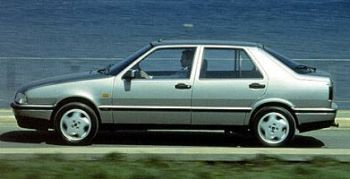 |
|
Fiat's leading role in
the development of diesel engines is highlighted by a series of
important landmarks, which include the introduction in 1987 of the Croma 1.9
TDI, the world's first production diesel powered car fitted with direct fuel
injection. |
|
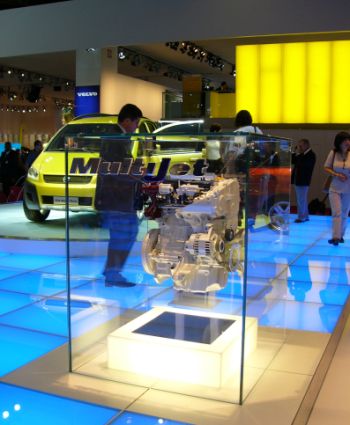 |
|
With its sophisticated
engineering, the 1.3 Multijet engine, seen here on display at last
weeks Paris Motor Show, is perfectly suited for superminis, and
helps achieve even more ambitious goals for the reduction of CO2
emissions. |
|
|
![]()
![]()







